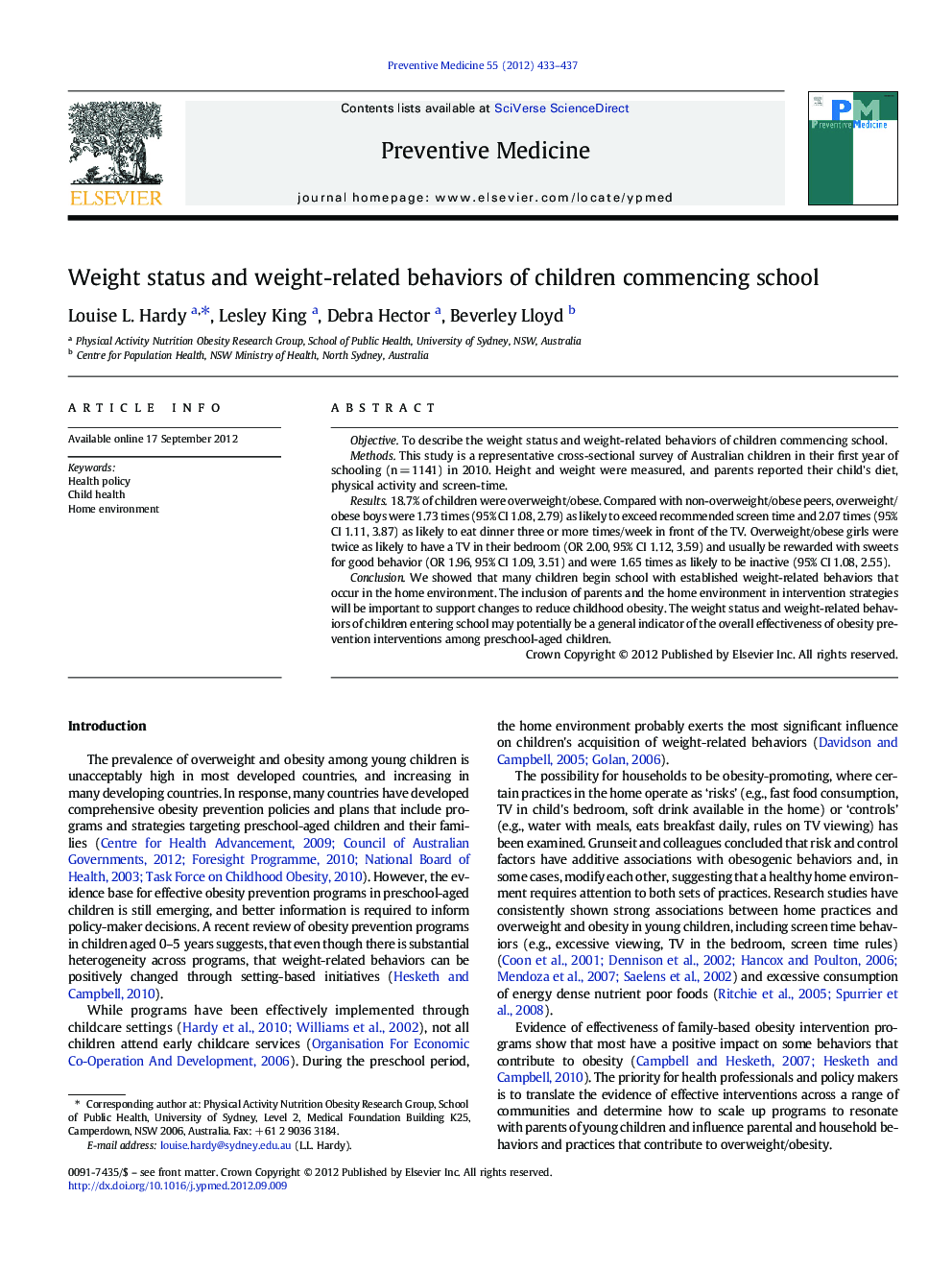| Article ID | Journal | Published Year | Pages | File Type |
|---|---|---|---|---|
| 6047822 | Preventive Medicine | 2012 | 5 Pages |
ObjectiveTo describe the weight status and weight-related behaviors of children commencing school.MethodsThis study is a representative cross-sectional survey of Australian children in their first year of schooling (n = 1141) in 2010. Height and weight were measured, and parents reported their child's diet, physical activity and screen-time.Results18.7% of children were overweight/obese. Compared with non-overweight/obese peers, overweight/obese boys were 1.73 times (95% CI 1.08, 2.79) as likely to exceed recommended screen time and 2.07 times (95% CI 1.11, 3.87) as likely to eat dinner three or more times/week in front of the TV. Overweight/obese girls were twice as likely to have a TV in their bedroom (OR 2.00, 95% CI 1.12, 3.59) and usually be rewarded with sweets for good behavior (OR 1.96, 95% CI 1.09, 3.51) and were 1.65 times as likely to be inactive (95% CI 1.08, 2.55).ConclusionWe showed that many children begin school with established weight-related behaviors that occur in the home environment. The inclusion of parents and the home environment in intervention strategies will be important to support changes to reduce childhood obesity. The weight status and weight-related behaviors of children entering school may potentially be a general indicator of the overall effectiveness of obesity prevention interventions among preschool-aged children.
⺠Almost one in five children commences school overweight/obese. ⺠Many children begin school with established weight-related behaviors. ⺠Parents and the home environment must be included in intervention strategies.
